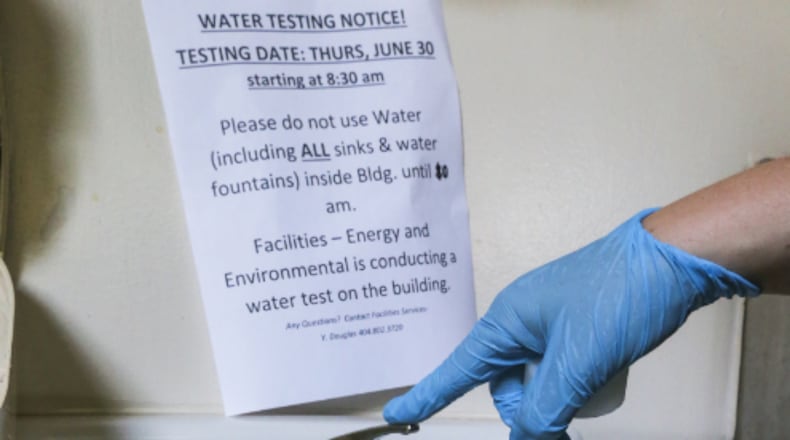Comprehensive, system-wide testing of water in Fulton County Schools revealed elevated levels of lead in individual sinks or water fountains in 28 elementary schools, 11 middle schools and nine high schools. Results of tests in 10 schools have not been finalized.
There is no safe level of lead in drinking water, according to the Environmental Protection Agency. However, the American Academy of Pediatrics recommends that the concentration of lead in school water fountains not exceed one part per billion.
Of the 84 schools tested, 57 percent had at least one site with a lead level of more than 15 parts per billion, the limit the EPA allows in water systems before corrective action must be taken.
At Brookview Elementary School, a classroom sink produced a reading of 661 ppb, and a water fountain produced a reading of 526 ppb, the two highest lead levels in Fulton County schools. These levels are 44 times and 35 times larger, respectively, than the 15 ppb limit.
The Centers for Disease Control and Prevention and other public health experts say even low levels of lead in children’s blood can result in behavior and learning problems, lower IQ, slowed growth and other problems.
Lead in brass fittings that line faucets are largely to blame, said Fulton schools director of facility services Joseph Clements. The percentage of lead allowed in the fittings changed in 2014, so what was a safe standard when the fittings were installed is no longer considered a safe standard.
The manner of testing water, in which samples are taken after water has sat for hours in pipes, leads to higher results, Clements said, because the water is resting against the brass fittings longer. Continuous flow tests, which were done on a small scale, produced no measurable levels of lead, he said.
Inspections were conducted of numerous sinks, fountains and kitchen kettles in each school. Hapeville Elementary School had the highest number of contaminated sites in the district, 17.
Webb Bridge Middle School had the highest detected lead level of the district’s middle schools at 341 ppb, and Independence High School had the highest of the district’s high schools at 367 ppb.
Out of more than 7,000 samples, less than 3 percent measured higher than 15 ppb, according to Fulton school spokeswoman Susan Hale.
The district has already begun replacing and retesting the brass fittings, and Clements estimates the county will spend $50,000-100,000 on the effort. The faucets with elevated lead levels are cut-off until repairs are made.
“We’re trying to make sure we have a safe, healthy learning environment for our students, staff and visitors,” said Clements. “The whole system’s attitude is we want to do what’s right.”
FCS began testing after observing in July 2016 that 40 percent of Atlanta Public Schools measured elevated lead levels.
Use the map below to find schools in FCS with elevated lead levels:
For readings from every school tested, visit: https://www.fultonschools.org/en/Pages/FCSSpotlight.aspx?item=266
About the Author
Keep Reading
The Latest
Featured


